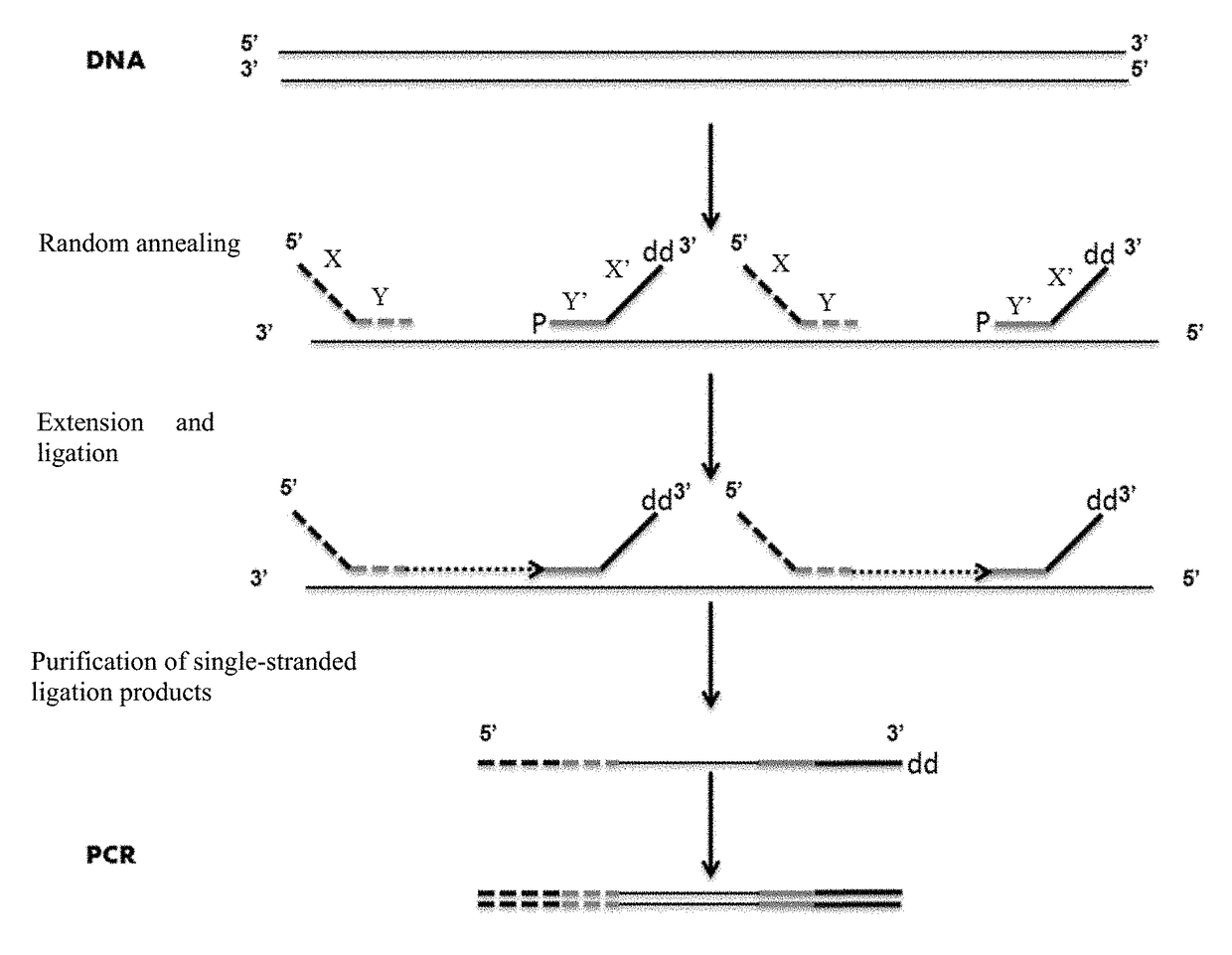Primer for nucleic acid random fragmentation and nucleic acid random fragmentation method
a nucleic acid and random fragmentation technology, applied in the field of nucleic acid disruption, can solve the problems of short artificial fragment, disruption method has its own disadvantage, annealing within the single-stranded molecule, etc., and achieve the effect of reducing the requirement for professional skills of technicians, convenient and fast, and high coverage uniformity
- Summary
- Abstract
- Description
- Claims
- Application Information
AI Technical Summary
Benefits of technology
Problems solved by technology
Method used
Image
Examples
example
[0049]1. Primer Design
[0050]In this example, upstream random primers and downstream random primers comprising 8 random sequence sites were designed and ordered, the sequences being as follows:
[0051]upstream random primers:
5′-GACGACCGCTTGGCCTCCGACTTNNNNNNNN-3′,
[0052]downstream random primers:
5′-P-NNNNNNNNGTCTCCAGTCGAAGCCCGACG-ddC-3′,
[0053]wherein, in the upstream random primers, “GACCGCTTGGCCTCCGACT” is the 5′-end adaptor sequence for a sequencing platform of the X sequence, the “GAC” before the 5′-end adaptor represents protecting bases, “NNNNNNNN” is the random Y sequence, and a spacing base is present between the X sequence and the Y sequence; and in the downstream primers, “GTCTCCAGTCGAAGCCCGA” is the 3′-end adaptor sequence for a sequencing platform of the X′ sequence, the “CG” after the 3′-end adaptor represents protecting bases, “NNNNNNNN” is the random Y′ sequence, P is phosphorylation modification, and ddC is dideoxy modification. The random sequence was randomly synthesized...
PUM
| Property | Measurement | Unit |
|---|---|---|
| Fraction | aaaaa | aaaaa |
| Ratio | aaaaa | aaaaa |
Abstract
Description
Claims
Application Information
 Login to View More
Login to View More - R&D
- Intellectual Property
- Life Sciences
- Materials
- Tech Scout
- Unparalleled Data Quality
- Higher Quality Content
- 60% Fewer Hallucinations
Browse by: Latest US Patents, China's latest patents, Technical Efficacy Thesaurus, Application Domain, Technology Topic, Popular Technical Reports.
© 2025 PatSnap. All rights reserved.Legal|Privacy policy|Modern Slavery Act Transparency Statement|Sitemap|About US| Contact US: help@patsnap.com



